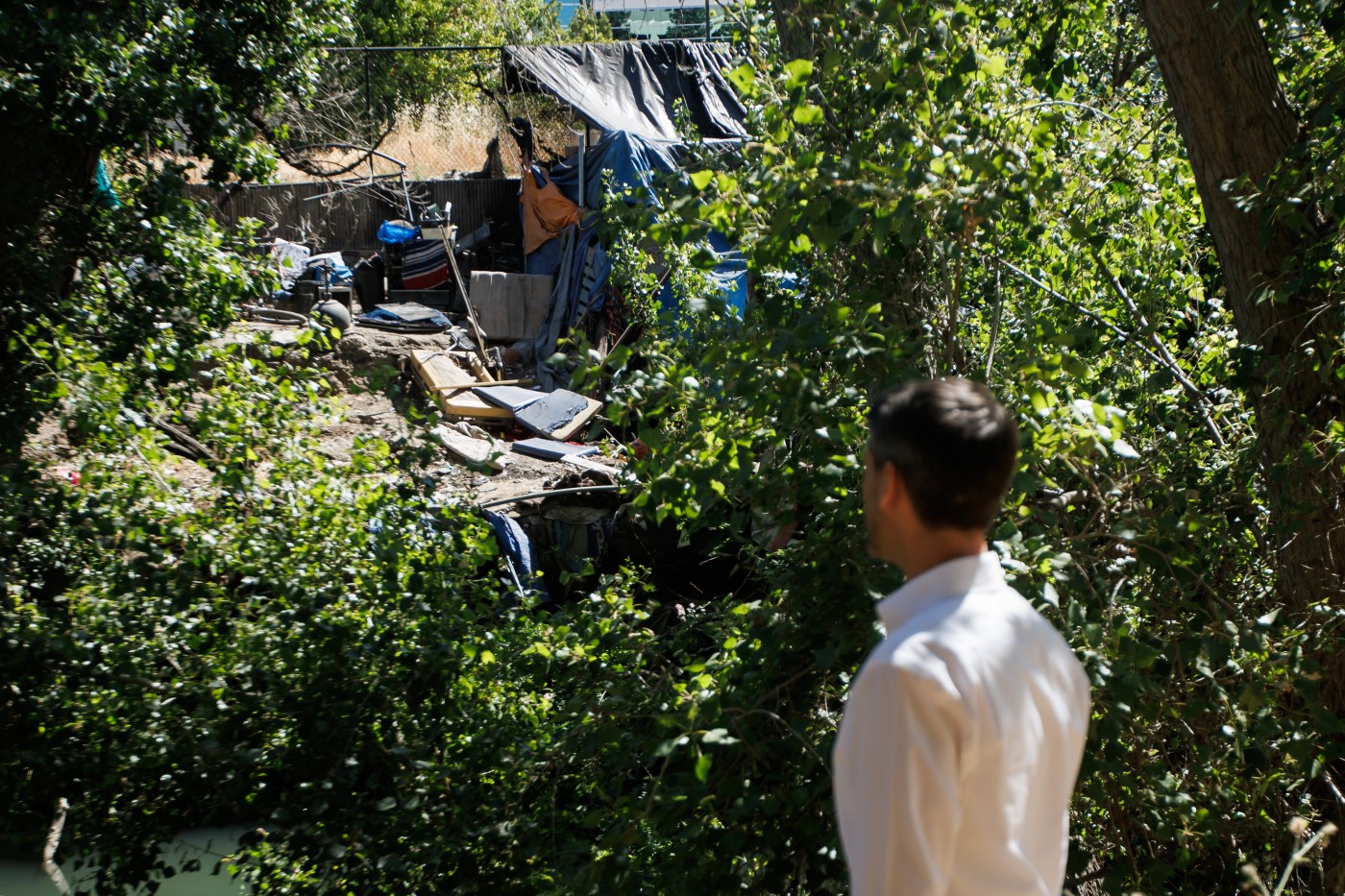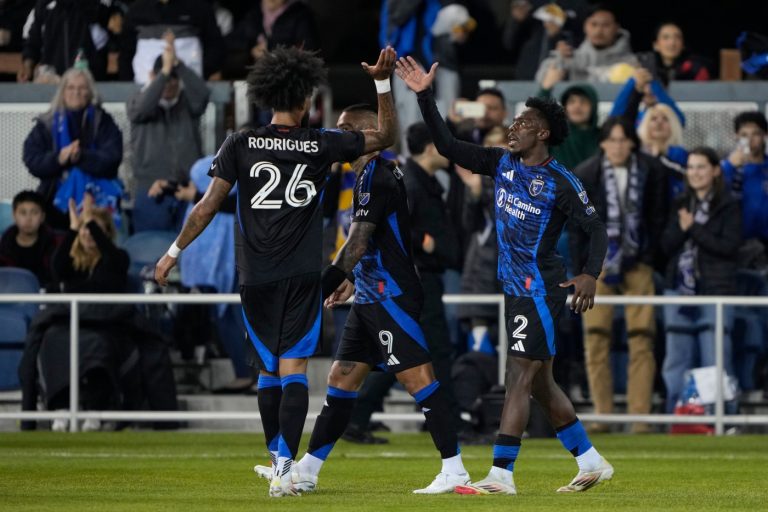San Jose’s quest to move hundreds of homeless residents from the city’s waterways and into sanctioned encampment sites — including within neighborhood boundaries — is getting support from an unlikely group: the Willow Glen Neighborhood Association.
But with a catch.
Despite local protests and petitions circulating, two-thirds of the association’s board has voted to support a managed site on the Valley Transportation Authority’s Lelong Street property — one of the three proposed locations in Willow Glen — and has attached 11 conditions to gain its support.
“Our board members are really frustrated with the status quo and how homelessness has increased rapidly over the years,” said Association Board President De Anna Mirzadegan. “We’re frustrated with the county’s approach to homelessness. They have answered that by getting into the construction and development business, which takes several years and is doing very little for those living on the streets now.”
Pressure from the San Francisco Bay Regional Water Quality Control Board has forced San Jose to relocate about 500 homeless residents from its waterways to expedite the clean-up of trash and pollution and comply with the Clean Water Act.
If San Jose fails to meet its mandates by next year, Mayor Matt Mahan said it could result in tens of thousands of dollars in daily fines.
Last month, the San Jose City Council identified eight prospective “safe sleeping” or “basic needs sites”, which included three within Willow Glen at the VTA’s property, Lelong Street and Willow Street and near Almaden Road and Canoas Gardens Avenue.
These sites could temporarily serve between 100 and 150 homeless residents and provide basic necessities like food, potable water, toilets and showers.
San Jose has allocated $10 million from Measure E funds for the current fiscal year to create basic, low-cost sleeping sites. Preliminary estimates established a price tag with a range of $18,000 to $40,000 per tent, according to a city memo.
The creation of safe sleeping sites is part of a larger push to solve the homelessness crisis within the city. One of the biggest campaign promises Mahan made in becoming the city’s mayor was to “end the era of encampments.”
Last year’s homelessness count found approximately 6,340 homeless residents, which included nearly 4,400 people living in encampments or vehicles.
To expedite the creation of safe sleeping sites, the city council also placed the authority in the hands of city staff to evaluate the sites and award the contracts without its approval. But it comes with a commitment to engaging council district offices to gauge community sentiment once the locations have been whittled down even further.
How the city processes that input remains to be seen, especially with Willow Glen’s position that it is willing to accept one specific site so long as 11 conditions are met.
Those conditions include providing service for only homeless residents in the immediate vicinity, 24-hour security, prohibiting drugs, alcohol and violent behavior and the availability of wrap-around services such as mental health, addiction and case management.
The association’s board also conditioned its support on the city preventing future encampments and limiting the site’s operations to three years. It includes a provision that the site must be dismantled in six months if not properly managed.
While the city has not directly responded to the board about its position letter, Mirzadegan said the conditions set by the board aligned with conversations it had with Mahan and District 6 Councilmember Dev Davis, whose district includes Willow Glen.
“Abating encampments doesn’t solve anything,” Mirzadegan said. “It disrupts them, forces them to move to another location and the cycle is repeated. We’re willing to give help to those who want it and are willing to accept it. Communities need to come together and compromise.”
But not everyone in the community is on board with that plan.
Helen Hutchings, a Willow Glen resident and board member of its neighborhood association, told The Mercury News earlier this month that the sites should not be built in neighborhoods.
“We don’t feel it’s appropriate to house people in tent camps in anybody’s neighborhood when the county has so much land that could be used,” she said.
Mirzadegan said that Mahan indicated the neighborhood would only get one site, which is why the board narrowed down its preference to the VTA site.
“That was a more appropriate spot because it doesn’t back up into anyone’s backyard or neighborhood,” she said.
Davis said that city staff is still evaluating each site so she wasn’t sure if every stipulation the neighborhood association put forward could be met. But she added that she would be pushing that only Willow Glen’s district would receive one site.
Related Articles
Newsom orders California officials to ramp up homeless sweeps just weeks after Supreme Court ruling
Opinion: Santa Clara County’s safety net services build stronger communities for all
County boosts support for unhoused West Valley residents
3 vying for Berkeley mayor make their case to voters
Why is San Jose getting a $7 million tiny home grant meant for San Diego?
Prior to approving the sanctioned sites last month, Mahan anticipated some pushback, noting that every city historically faces some form of community opposition for these types of projects.
Having met with the board and listened to their concerns, Mahan lauded Willow Glen for buying into his plans to curb homelessness.
“Our community is stepping up to end the crisis of unmanaged encampments and untreated mental illness in San Jose,” said Mahan. “I’m grateful for the trust of neighbors in Willow Glen and across our city — now it’s up to City Hall to maintain that trust. We will do so by demonstrating that these solutions are effective in making our city safer and cleaner for everyone and requiring that people use them when available.”












